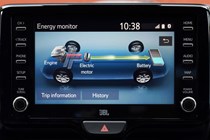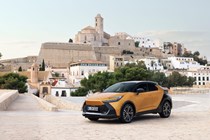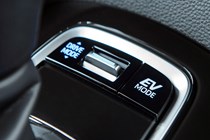You’ll find that most hybrid and plug-in hybrid cars have a button marked EV or EV mode – perhaps among a choice of other driving modes or as an individual button somewhere on the dashboard or centre console. But what does EV mode do, and when is it best to use it?
EV generally stands for Electric Vehicle in the motor industry, and that’s exactly what this refers to here. Activating the EV mode stops your hybrid car using the petrol or diesel engine and instead forces it to use the electric motor to propel itself.
In order for this to work, the hybrid in question must first have the capability of driving on electric power alone, and second have enough battery capacity available for the electric motor to take over. As such, how often and when you’re best to use EV mode will vary between different types of hybrid.
What kinds of hybrids have an EV mode?
For a hybrid to have an EV mode, it must have an electric motor powerful enough to drive the entire car and a big enough battery for the e-motor to use as a power source.
So while ‘mild hybrid’ cars don’t have an EV mode, conventional hybrids, such as the so-called self-charging hybrids sold by Toyota and others, do generally have this option. This is because although most Toyota hybrids only have a very small battery for the electric motor, they are still able to drive along without turning on the petrol engine for short distances.
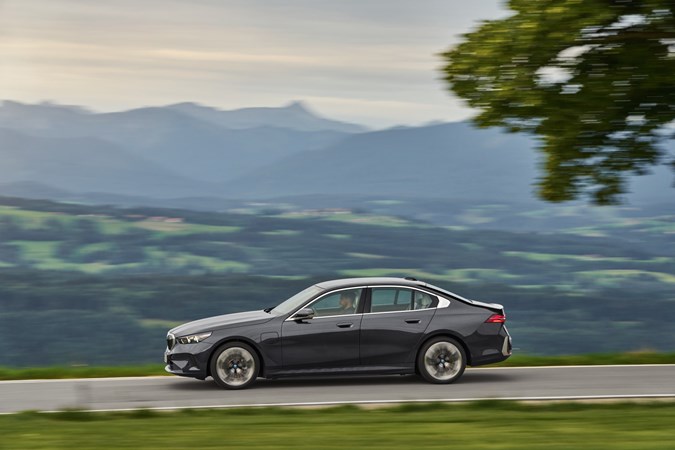
EV mode has become much more significant as plug-in hybrid electric vehicles (PHEVs) have become more common. These have much large electric drive batteries that work alongside their petrol or diesel combustion engines, enabling them to function as 100% electric vehicles for several miles at a time.
Almost all car manufactures now offer at least one plug-in hybrid, so if you’re a new PHEV driver and want to know how to get the most out of the EV mode, keep reading.
What are the advantages to using EV mode?
Where available, EV mode stops your car using petrol or diesel and instead relies on the e-motor and batteries.
This is good news for your bank balance, because electricity is still cheaper than petrol and diesel, so using EV mode as much as you can makes your car cheaper to run.
It’s also good news for local emissions, as when running on the electric motor a hybrid or PHEV produces nothing from its exhaust.
Your car will also be quieter with the combustion engine turned off.
Are there any disadvantages?
The car’s performance may be reduced, as the electric motor will be less powerful on its own than in combination with the regular engine.
You may not notice this very much at low speeds, however, due to the comparatively high amount of torque (pulling power) e-motors produce, making them feel quite effortless to drive.
It’s also worth thinking about the best time to use EV mode to make the most of it.

When is it best to use EV mode?
PHEVs and hybrids make best use of EV mode at lower speeds – particularly when driving around town.
The stop-start nature of urban and city centre traffic will even help to keep the batteries topped up. Which is why although many self-charging hybrids only have very short EV driving ranges, you’ll find they are able to use EV mode much more of the time than you might expect in these situations.
PHEVs in particular are perfectly capable of driving at higher speeds using EV mode; you’ll just find that this uses the battery up much more quickly.
Still, since some plug-in hybrids have electric-only driving ranges of 50 miles or more, you may find that you can cover lots of journeys without ever troubling the conventional engine. This is why PHEVs often have such enormously high official fuel economy figures – though being plug-in hybrids, to get the best out of them you will have to charge the batteries from the main electricity grid in order to keep them topped up.
If you’re wondering about how to drive a Toyota hybrid the best way, the company has a full guide to maximising the efficiency of its system in its own online magazine.
Do I have to turn EV mode on?
EV mode is typically thought of as a specific function that forces your hybrid or PHEV to use the electric motor as long as there is battery power available. It’s up to you whether you use this function.
However, if left to their own devices – in the Normal or Auto driving mode, for example – the car will also try and use the batteries and electric motor as much as possible to maximise efficiency. In many cars you’ll find an EV light popping up on the dashboard to tell you when this is happening.

Some of the very latest PHEV models, such as those from BMW, will even use sat-nav and route data to work out the most efficient points on the route to use EV mode, all by themselves. We’ve found the usefulness of this to be a little variable in practice, though, so you may find it’s still better to make the decisions about when to use EV mode yourself.
Is EV mode the same as Eco mode?
No. EV mode is specifically related to driving with the electric motor, and is only available in hybrids and PHEVs that have this functionality. Many other types of car have an Eco mode – so what is an Eco mode?
Eco mode is also designed to improve mpg and reduce running costs, but it typically does this by limiting engine power or reducing the energy used by accessories such as the air-conditioning. So while you can use Eco mode all the time – and EV mode only when there is enough battery capacity – you may find the car a little too slow in some situations. As well as uncomfortable in extremes of hot and cold weather.
Power mode (sometimes PWR mode) is another common feature in many different types of car, and this does the opposite to Eco mode – maximises performance for the greatest speed at the cost of increased fuel consumption and higher emissions.
Do all EV modes work in the same way?
The basic function is the same across all models, but the results and changes to the way the car drives may be subtly different.
For instance, while many normal hybrid cars have the electric motor integrated into the gearbox or transmission, on a plug-in hybrid its more likely to be located separately. Sometimes, such as on Volvo plug-in hybrid models, this means the electric motor drives the rear wheels while the petrol or diesel engine drives the front wheels.
In this instance, when operating together, both forms of propulsion give the vehicle four-wheel drive. But when operating in EV mode, the car becomes rear-wheel drive only – something that can have a dramatic impact on the driving experience, especially in slippery conditions.
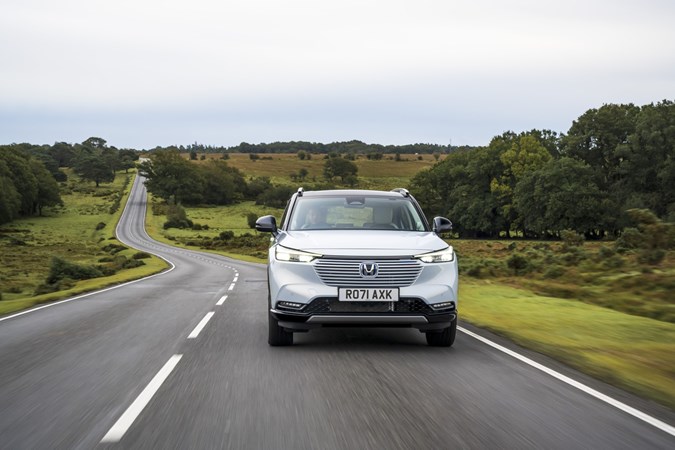
Just so you know, we may receive a commission or other compensation from the links on this website - read why you should trust us.




